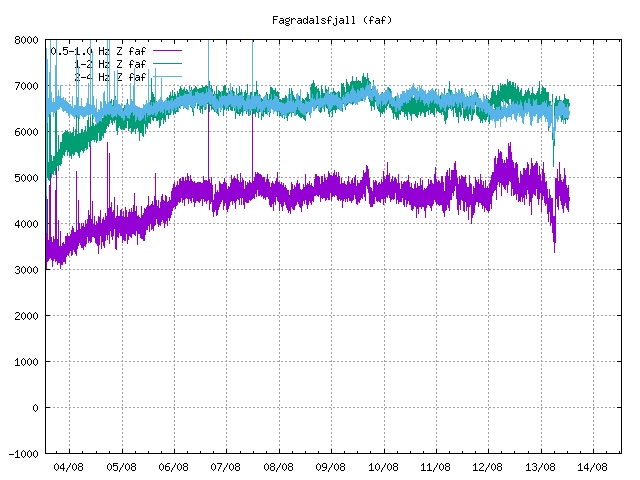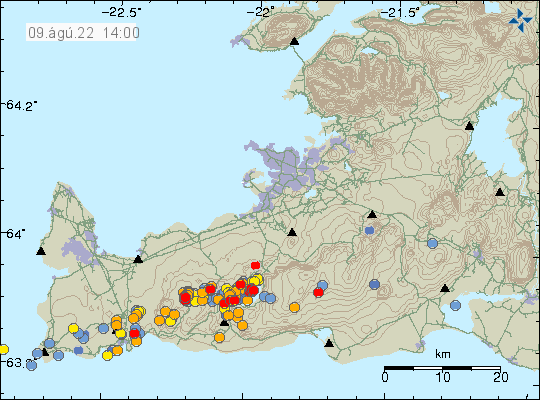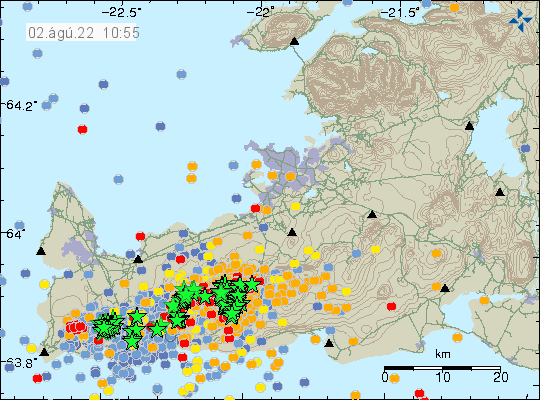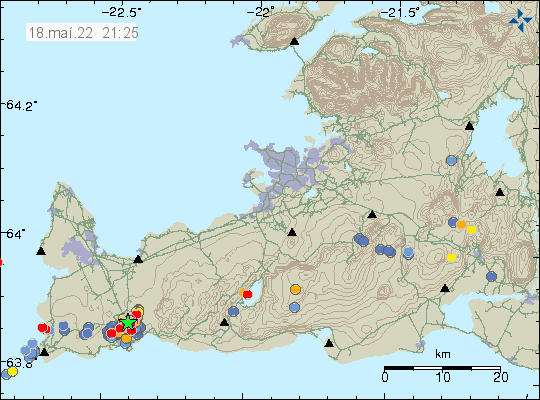This morning on (13-August-2022) at 06:30 to 08:00 UTC there was a sharp drop in harmonic tremor activity in the eruption in Meradalir valley. What happened is unclear, since no change has so far happened on the surface. From the looks of the harmonic tremor now, it seems that it is unstable currently.

New fissures might be about to open up, this can happen both north and south of current eruption. New fissures might also open up on either side of current eruption if that is a path that the magma can take. What happens is unclear and it is impossible to know when that might happen. Depending on the were next eruption happens, might mean a lot when it comes to possible lava paths and possible road damage if lava flows over a important road on Reykjanes peninsula.
Donations
Please remember to support my work. I am currently really broke (sigh) and that’s just not fun. Thanks for the support. 🙂



